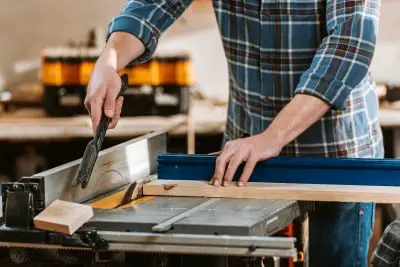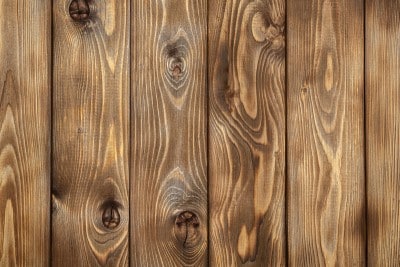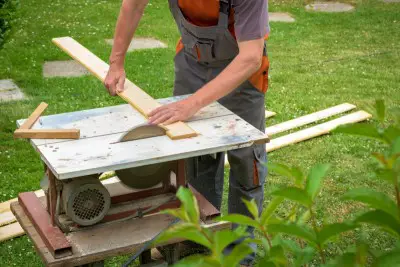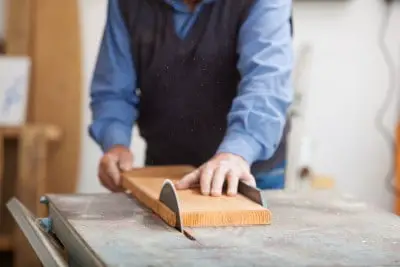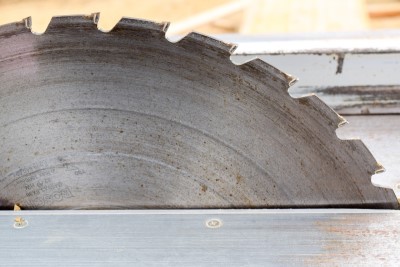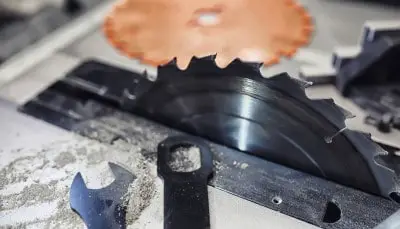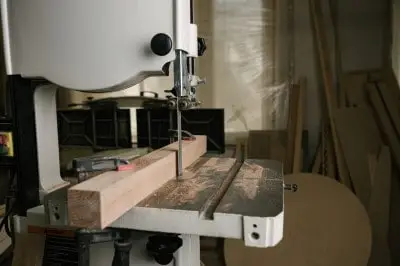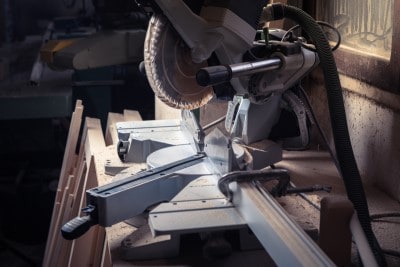You know the feeling – you’re using your table saw, just like you would any other day, and you notice it seems the cutting job is taking a bit… longer. Maybe the cutting isn’t as precise, or it takes a bit more muscle to get through it all. Perhaps, you’re even seeing signs of woodburn on your expensive piece of mahogany.
If this is happening to you, it might be time to replace your saw blade. Obviously, if you use your electric saw regularly, this time will come and you will need to pay the expense in order to buy a new blade; that said, it can be difficult to know exactly when you need to pull the trigger to and make the trip down to the hardware store.
You should replace your saw blade when you notice that its performance is not as good as you’d like; it is mostly up to you, although if it is difficult to cut wood or you are experiencing excessive woodburn, those are good indicators you need to replace the blade.
You should also make sure that the issues with your electric saw cannot simply be fixed with a quick clean or sharpening. Typically, you only need to replace your blade if you can’t get your blade back to its near-original state even after a thorough clean and sharpen.
In this article, we will discuss ways you can extend the life of your saw blade, as well as how long you can expect your saw blade to last, and how to actually replace the blade.
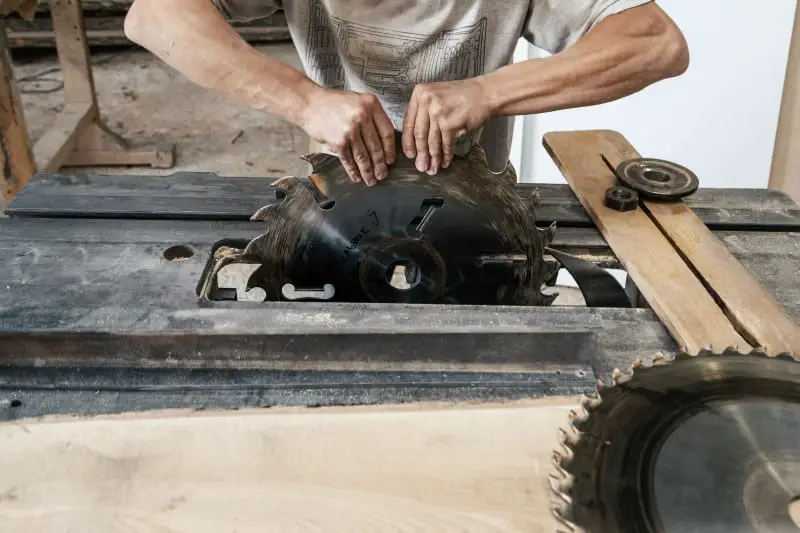
How Long Do Saw Blades Last
How long your saw blade lasts depends on a number of different factors, including but not limited to:
- the type of wood being cut
- how often the saw is used
- quality of the blade
- how often the saw is cleaned and sharpened
- how the saw is handled
- how the saw is stored
Depending on these and other factors, the timeline of your saw’s blade may vary greatly from another.
That said, you can expect your blade to need replacement after the second or third time it is cleaned and sharpened; after that, it is likely time to replace the blade. This usually happens after about a year or so of regular use.
If you want to make sure your saw blade lasts as long as possible, here are some general upkeep habits to maintain.
Read our full article on How Long Does a Table Saw Blade Last.
How-To Prolong The Life of Your Saw Blade
Saw blades can be a nuisance to have to go and replace, let alone the actual cost of purchasing a brand new blade can be a real burden for some people.
The good news is there are ways you can prolong the life of your saw blade; make sure to practice these so that you can extend the life of your blade for as long as possible.
Regular Cleaning
Many electric saw owners either don’t know or forget that your saw blade should be cleaned semi-regularly, so as to keep it in tip-top shape. This is important so that your wood cutting remains efficient (which is the reason you purchased the saw in the first place) and so that your blade lives a long and happy life.
When you use your saw often and don’t clean it regularly, it will slowly ‘build up’ and degrade in quality, which will impact the quality of your cuts and increase risk of hazards, such as kickback (remember to wear safety glasses) and woodburn.
This is how to clean your saw blade:
- Soak your saw blade in an all-purpose cleaner for 20 minutes or less (make sure the cleaner is strong enough to get rid of the residue).
- Brush the blade with a brush, preferably one with plastic bristles; a toothbrush works great. Try to brush the entire surface area of the blade.
- Run the blade under water (so as to rinse off the cleaner) and dry it off with a hand towel or paper towel.
- Put the blade back in the saw when you need to use it next.
It is a good idea to wear protective eyewear and gloves, as well as a mask, if possible; this is to protect yourself from the potentially toxic cleaning materials.
Try to clean your saw blade at least two to three times a year, or more if you feel so inclined. If it’s a cheaper quality blade, you may need to replace it after only one or two cleanings; if it’s higher quality, it can probably withstand more than three cleanings before it needs a sharpen or replacement.
It’s also worth mentioning that sometimes electric saw blade owners think they need to completely replace their blade, but a simple clean will fix all the issues.
Consistent Sharpenings
Sharpening your saw blade is a win-win scenario; not only will you instantly notice your saw will cut even better than before and the actual cutting becomes easier, but regular sharpenings also prolong the life of your saw! This means there is truly no downside to sharpening your saw blade whenever it’s needed.
You should sharpen your saw blade when you notice the following on your blade:
- rounded teeth
- chipped teeth
- broken teeth
- missing teeth
- visibly dull teeth
- broken carbide tip (check for this with a flashlight)
You may also want to sharpen your blade if you notice it is taking more effort to cut your wood than usual.
To sharpen your blade, you can:
- take your saw to a professional sharpening service.
- use a file.
- use a diamond wheel sharpener.
- use a crank sharpener.
- use an automatic sharpener.
When you fail to sharpen a dull blade, you run the risk of overheating your blade when you cut wood; this can further warp your blade to the point of no return, which means you will have to replace the blade (since no amount of sharpening cannot fix a bent blade.
In addition to consistent cleaning and sharpening, you can also prolong the life of your saw blade by handing and storing it properly.
Proper Handling and Storage
How you handle your electric saw (and its blade) can have a great effect on how long it lasts, as well as how you store your power tool (this is also generally true for most tools).
Handling your saw safely is pretty standard – simply ensure that you are not being overly clumsy with the saw and that you are not banging the blade off of other materials or objects. Even dropping your saw once can severely damage the blade or tool, so try to be as careful as possible when handling your electric saw.
The same holds true for storage; make sure it is stored in an area that is away from other objects, as well as away from people. This will guarantee that your saw remains in as good a shape as possible between uses.
How-To Replace Your Saw Blade
If you’ve cleaned and sharpened your saw blade a few times and it appears as though it is making little difference, it might be time to replace your blade.
This can be costly, although it’s important to note the more you pay for your blade, the longer it will last and the better quality your cuts will be – not to mention the easier it will be to cut wood material.
Once you have your new saw blade, follow these steps to safely replace it:
- Wear some type of protective gloves.
- If on, turn off your electric saw and unplug the cord from the outlet.
- Remove the old saw blade from the electric saw; depending on the model or year of the saw, this process may vary, so check the instruction manual for details.
- Before you install your new saw blade, clean the blade guards on your saw, as well as remove all built-up sawdust beneath where the blade goes; you should do this since it is not often you will be able to clean below the blade.
- Install your new saw blade securely; depending on the model and year of your saw, this process may vary.
- Make sure the new blade is installed correctly before first use.
- Clean and sharpen your saw blade regularly to extend its lifespan.
- Safely store your electric saw, away from people and other objects.
As long as you pay proper attention and care to your electric saw and blade, replacing the blade will be a rare occurence, as it should be.
Read more:

